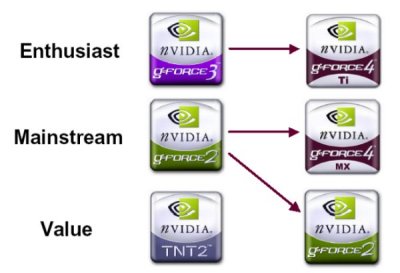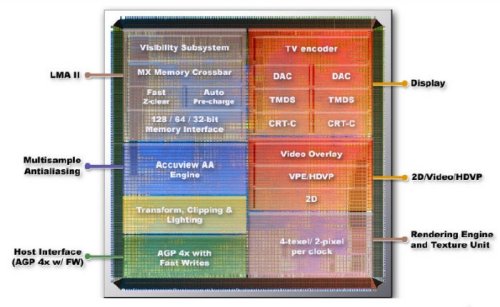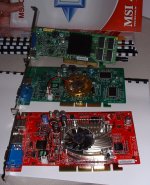
As we can see the GeForce3 line is being replaced by the
GeForce4 Ti line, and the GeForce2 products by GeForce4 MX’s. nVIDIA are
still producing a large number of TnT 2’s for OEM’s, but it seems as though they
are finally transitioning them, most likely, to the low end GeForce2 MX’s.

As mentioned elsewhere the GeForce4 MX is comprised mostly of the DirectX7 3D feature set, and the naming of the card has caused some contention within the 3D market, including developers. nVIDIA’s justification is that with so much of the die area dedicated to features not found in GeForce2 level hardware it wouldn’t be correct to call it a GeForce2 level product.

nVIDIA also stated that they wouldn’t seek to confuse consumers over the MX line’s features and capabilities; however, nVIDIA have already produced a ‘ChameloenMX’ demo which gives the impression that it is capable of GeForce3’s features. Moreover, when I questioned the MSI representative at the launch she wasn’t aware that the MX chips lack full GF3 functionality. While it is certainly understandable for nVIDIA to promote the improvements made in their new MX line-up, branding these chips as GF4-class hardware will, in our opinion, create too much potential for confusion. And as Brian Hook has already pointed out, placing the GeForce4 label on these chips makes it difficult for developers using pixel shaders to put ‘GeForce4 supported’ on the box, since the MX’s do not support pixel shading. With regards to vertex shaders, nVIDIA did state that the feature will be supported ‘in software’ for the MX chips. Whether this means that it will just rely on DirectX’s software paths, nVIDIA providing some optimised routine that makes DX report it has hardware T&L, or the drivers redirecting the calls over the CPU, like 3dfx’s old ‘Geometry Assist’, remains to be learned. I suspect that if the latter is the case, it will most likely be transparent to board owners, and will not be a toggled option in the driver panels.


